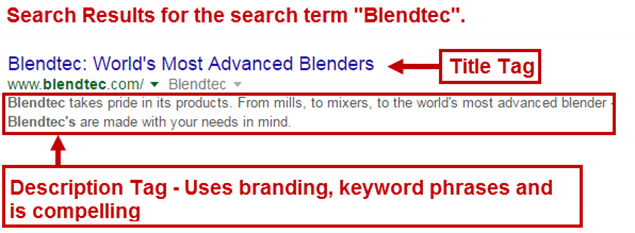On Page SEO
Vital Components of On-Page SEO
When you think of search engine optimization (SEO), you need to think about what you can control and one of these is your on-page SEO. If you are creating a content piece at your center of content (your website or blog) then you have complete control of the on-page SEO.

Your content has to be top-quality as this is essential SEO and quality is a must to engage your audience but there are also some very easy to implement on-page SEO details that you need to take care of as well.
You need to help the search engines as much as you can in an area where you have complete control. So let’s be sure that the basic on-page SEO is address to help your content to be understood by the search engines and this will help it to be found in search. If it is not found then it is not a valuable as it needs to be to support your business.
You can never ensure the popularity of your content with readers but you can make sure that what you are have created needs to be well set up from a SEO perspective.
Content reigns supreme as this is the main reason that your website is being visited by users, but there are other aspects of on-page SEO that involve communicating about your website in a language that will easily be understood by Google and the like. Attention to elements including the following will ensure that search engines have an easier time picking up on signals that your website is a quality result due to its SEO design and content.
Title Tags: This is the information that will wind up being the clickable text in search results so make sure that the keywords you include have a natural fit and are a part of your overall web marketing strategy. Your company branding can also be used in the page or post title tag.
Description Tag: This is a short (less than 160 characters) that describes the content of the page or post. The search engines look for the description and will present it in the search results so this tag does double duty. It supports the ability to be found by search engines as it helps the search engines determine how to rank the page or post. However, since it is presented to searchers in the search results it also helps engage a searcher. This engagement can lead to higher click-through rates from the search engines results – very important!

Header Tags: These are also known as H-Tags. When we consider how to make things easy for humans to scan and read by breaking our content into digestible and logical chunks and assigning a header tag to the section then we are also making it easier for the search engines.
Header tags are a major component of your on-page SEO. There is a natural relationship between what makes for a good user experience and the signals search engines are looking for. If you know how to give users a better reading experience, you will also be aligning with good on-page SEO.
Use the H1 tag to identify your main topic (often this will be your title tag as well) and H2 tags as subheadings to divide your content. H3 tags are subheadings of H2, and so on. While the concept is relatively simple, many companies don’t properly divide and label website content, nor do they optimize tags for keywords related to their business.
Alt Image Tags: These tags are critically important for people who are visually impaired, as the labeling text will serve as a description of each image. Properly created alt image tags also will help your visual content rank in image searches and reinforce the relevance of your overall text.
If for example you can display graphical images of your products and services then image alt tags for each image are very valuable. Moreover, it is very wise and good SEO to use image file names that support the page or post topic and that are descriptive of the image and tie into the keyword phrase focus of the page or post.
Internal Link Structure: A link on your own website that points to another page on the same website is known as an internal link. The goal of optimization in this area is to ensure that there is an easy flow between the page the reader is on and other pages or posts that relate well to the page the reader is on.
Internal links are beneficial for user navigation, and these links set up your website properly for the crawling process through which Google and the other major search engines discover and index your content.
This is by no means an exhaustive list of on-page optimization areas. However, I consider these items to be vital SEO. These items serve as a starting point from which you can begin to look at your website from an on-page SEO perspective. You also need to develop strategies over the longer term to increase the organic search popularity of your website. Always make sure that you take the necessary steps to optimize those aspects of your website over which you have complete control.
To learn more about SEO here is a link to a blog post on Linking.
